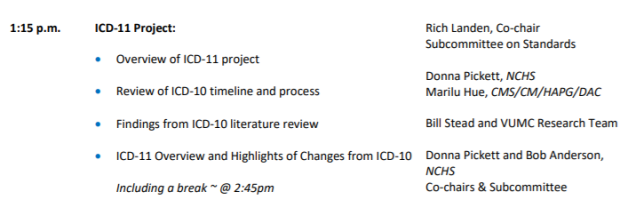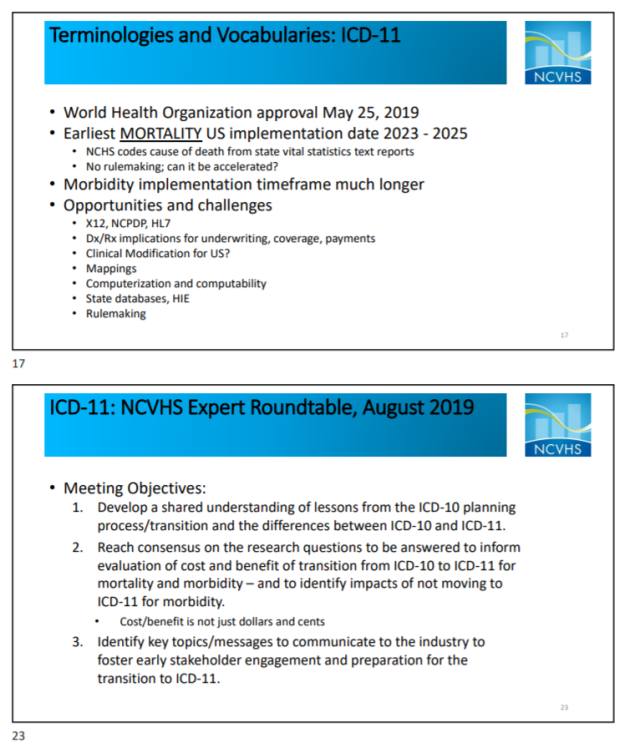Update on NHS Digital’s request for addition of SEID to SNOMED CT terminology system
August 1, 2020
Post #359 Shortlink: https://wp.me/pKrrB-58W
Update on NHS Digital’s request for addition of Systemic exertion intolerance disease (SEID) to SNOMED CT terminology system
In February 2015, a panel convened by the Institute of Medicine (IOM), now the National Academy of Medicine (NAM), published a report on ME, CFS called “Beyond Myalgic Encephalomyelitis/Chronic Fatigue Syndrome: Redefining an Illness.”[1]
The panel undertook an evidence review and formulated recommendations which had included proposals for new diagnostic criteria and the suggestion of the name “Systemic exertion intolerance disease (SEID)”, as part of a number of recommendations put forward for review and consideration by the Report’s sponsor agencies.
Five years on:
- The CDC has not adopted the term “Systemic exertion intolerance disease (SEID)”. In preference, the CDC uses “ME/CFS” on its website clinical information pages and for its Continuing Medical Education (CME) activities.
- The NCHS-CDC have not added the SEID term to ICD-10-CM, an adaptation of the WHO’s ICD-10, that is mandatory in the US for assigning diagnostic codes for medical billing and reimbursement.
- The SEID term has not been added to the final update of the WHO’s international edition of ICD-10 (Version: 2019).
- The SEID term has not been added to the SNOMED CT US Edition by its managers, the National Library of Medicine (NML), either as a new Concept code, or as a Synonym or Child term.
- The IOM panel’s Report formed part of the literature review for the revision of the ICD-10 G93.3 legacy categories. The WHO and the ICD-11 CSAC and MSAC committees have not included the SEID term in ICD-11.
- The IOM panel’s suggested case definition has not been subject to field testing by, or on behalf of the CDC. Several studies published since the Report’s release concluded that the proposed SEID case definition lacks reliability and specificity; discussed the unintended consequences of not specifying exclusionary illnesses; and noted the lack of acceptability to patients of the proposed case definition and proposed SEID nomenclature.
A couple of minutes on Google demonstrates that some websites providing clinical information to physicians, healthcare professionals and patients are referring to “Systemic exertion intolerance disease” as though the term had been tested, evaluated and adopted by US federal agencies — when this is not the case.
In the March 2020 issue of the ME Global Chronicle, I reported on a request submitted by NHS Digital in November 2019 for addition of the “Systemic exertion intolerance disease (SEID)” term to the SNOMED CT terminology system.
SNOMED CT is used in over 30 countries and is the recommended terminology system in the UK, US, Canada, New Zealand and Australia [2].
For NHS England, SNOMED CT UK Edition is the mandatory terminology system across all primary and secondary healthcare settings. The system is used by clinicians in electronic medical records (EMRs), at the point of care, to record findings, symptoms, diagnoses, interventions, procedures etc.
The UK Edition of SNOMED CT terminology system is managed by NHS Digital [3].
Authorized users can register to submit requests for changes or additions to the terminology system via an NHS Digital submission portal. Requests that meet criteria for potential addition to the SNOMED CT International Edition are referred on for consideration by SNOMED International’s terminology specialists.
Submission #30104 (November 30, 2019) requested addition of the term “Systemic exertion intolerance disease” as a Synonym under the existing SNOMED CT Concept: 52702003 Chronic fatigue syndrome [4].
The request appeared to originate from within the NHS (or other authorized SNOMED CT user) as no other class of stakeholder is referenced as the original requester.
The rationale text in support of request #30104 can be read on the NHS Digital Request Submission Portal, here: http://bit.ly/39Pz4vy
After drawing attention to this request on Twitter, I was contacted in March by a senior member of SNOMED International’s team.
I was advised that request #30104 had been submitted for consideration for addition to the SNOMED CT International Edition; that the request had already been processed and pending any further changes, would be implemented in the International Edition’s July release.
(Note: If the term “Systemic exertion intolerance disease (SEID)” was approved for addition to the July 2020 International Edition, the term would then be absorbed into the various national editions when they released their next updates.)
As the IOM panel’s proposed case definition and suggested term have not undergone field testing and evaluation; as the SEID term has not been adopted by US federal agencies; and as NCHS-CDC has made no decision to assign a code for SEID in the US ICD-10-CM for medical billing and reimbursement, it would be premature to approve a request for addition to the SNOMED CT International Edition.
These concerns for the potential addition of an untested, unadopted term to the SNOMED CT system were passed back to SNOMED International’s terminology specialists for their consideration.
In early June, I was informed that the terminology team had reviewed the information provided and concluded that adding “Systemic exertion intolerance disease” as a synonym is premature; that approval of this request had been retracted and SEID would not be included in the July release.
This was further confirmed on a SNOMED CT internal production page (see last entry under heading: “Concepts to be removed completely from the Alpha release content”): https://bit.ly/2Xed60V
The July 2020 release of the International Edition was published on July 31: https://bit.ly/39HA1a2
I can confirm that the two Synonyms terms that had been added under 52702003 Chronic fatigue syndrome for the Alpha production release:
● 3902795018 – SEID – systemic exertion intolerance disease
● 3902796017 – Systemic exertion intolerance disease
have been removed for the finalised July 2020 release*.
*In the event of a request for a change or addition to SNOMED CT not being accepted there is a formal appeals process and the submitter may request a further review of the decision. SNOMED International has confirmed that NHS Digital has not appealed against the decision not to add SEID to the finalised July 2020 release.
An abridged version of this post can be downloaded in PDF format here: https://bit.ly/2XeeS2e
References:
1 Committee on the Diagnostic Criteria for Myalgic Encephalomyelitis/Chronic Fatigue Syndrome; Board on the Health of Select Populations; Institute of Medicine. Beyond Myalgic Encephalomyelitis/Chronic Fatigue Syndrome: Redefining an Illness. Washington (DC): National Academies Press (US); Feb 2015. https://www.ncbi.nlm.nih.gov/pubmed/25695122
2 SNOMED CT International Edition browser and browsers for 14 national editions: https://browser.ihtsdotools.org/
3 NHS Digital SNOMED CT browser: http://bit.ly/38OqL1R
4 NHS Digital SNOMED CT Submission Portal: Request 30104:
https://isd.hscic.gov.uk/rsp-snomed/user/guest/request/view.jsf?request_id=30104
About SNOMED CT:
Clinical classifications like ICD-10 and the SNOMED CT terminology system are complementary and serve different purposes. ICD-10 is used after the event by clinicians and coders and focuses on diagnostic coding and data recording for statistical and epidemiological analysis, reimbursement and resource allocation.
SNOMED CT is used by clinicians in electronic medical records (EMRs), at the point of care, to record findings, symptoms, diagnoses, interventions, procedures etc.
Each clinical concept or phrase is assigned a unique SCTID code to provide a standardised, machine readable terminology for recording and sharing clinical information across multiple health care settings. SCTID codes are mapped to ICD-10 and to ICPC-2e codes for interoperability.
SNOMED CT is considered to be the most comprehensive, multilingual healthcare terminology in the world. It is used in over 30 countries and is the recommended terminology system in the UK, US, Canada, New Zealand and Australia.
SNOMED CT International Edition releases two updates a year. A number of countries maintain national editions which automatically incorporate the updated content from the core SNOMED CT International releases but may also include country specific terminology. The national editions release twice yearly updates on a staggered schedule and their current content may not reflect the changes and additions to the most recent release of the International Edition.
SNOMED CT does not regulate which concepts should or should not be used in clinical records, but makes concepts available in response to requests from stakeholders and in accordance with its editorial and content development principles [1].
Since April 2018, SNOMED CT UK Edition [2] has been the mandatory terminology system for use in NHS primary care, replacing the Read Code (CTV3) terminology system which is now retired. SNOMED CT UK Edition was scheduled for adoption across all clinical, secondary care and mental health settings from April 2020.
Browsers for the SNOMED CT International Edition and the national editions for Australia, Belgium, Canada, Denmark, Netherlands, Sweden, US and a number of other countries can be accessed here:
SNOMED International SNOMED CT Browser: http://browser.ihtsdotools.org/
1 SNOMED CT International Release Content Development:
https://confluence.ihtsdotools.org/display/DOCSTART/9.+Content+Development
2 The SNOMED CT UK Edition is managed by NHS Digital, as the designated UK National Release Centre. A public browser can be accessed here: https://termbrowser.nhs.uk/




